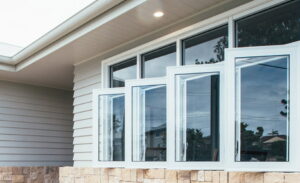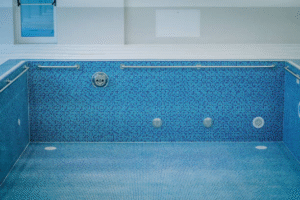
In today’s world, sustainability isn’t just a trend—it’s a lifestyle. From energy-efficient homes to eco-conscious fashion, every choice we make impacts the planet. One area that’s gaining attention in the world of home décor is eco-friendly sofa repair. Instead of tossing out old furniture and adding to landfills, more homeowners are embracing sustainable repair solutions to extend the life of their sofas—saving money and the environment at the same time.
Why Eco-Friendly Sofa Repair Matters
Every year, millions of pieces of furniture are discarded globally, contributing significantly to landfill waste. Most of these items, including sofas, can actually be restored or repaired instead of replaced. Manufacturing new furniture requires vast amounts of wood, metal, foam, and synthetic fabrics—all of which come with a high environmental cost.
By choosing eco-friendly sofa repair, you reduce waste, cut down on carbon emissions, and help conserve natural resources. It’s a conscious choice that supports a circular economy, where items are reused and refurbished instead of simply thrown away.
Repair Before You Replace: The Sustainable Mindset
The first step towards sustainability is adopting the right mindset. Many people mistakenly believe that a damaged sofa automatically means it’s time for a new one. But in most cases, simple fixes—like reupholstering, re-stitching, or replacing foam cushions—can make your sofa look brand new.
Repairing your sofa not only extends its lifespan but also gives you the freedom to refresh its look. Whether you want to change the color, fabric texture, or firmness, repairing is both economical and eco-conscious.
Choose Sustainable Upholstery Materials
When it comes to reupholstering, opt for materials that are sustainable and ethically sourced. Some excellent eco-friendly fabric choices include:
- Organic cotton: Free from synthetic pesticides and chemicals, it’s soft, breathable, and biodegradable.
- Linen: Made from the flax plant, linen is durable and naturally antibacterial.
- Hemp fabric: Known for its strength and sustainability, hemp requires minimal water and no harmful fertilizers.
- Recycled polyester: A smart option made from post-consumer plastic waste, reducing landfill impact.
For leather sofas, consider eco-leather or plant-based alternatives that are cruelty-free and less resource-intensive.
Use Non-Toxic and Low-VOC Adhesives
Traditional sofa repairs often involve glues, foams, and finishes that release harmful chemicals known as VOCs (volatile organic compounds). These can affect indoor air quality and harm the environment.
Switching to non-toxic, water-based adhesives and low-VOC finishes ensures your repair process stays green and safe. These materials not only protect the planet but also create a healthier living environment for you and your family.
Repurpose and Upcycle Sofa Parts
Eco-friendly sofa repair goes beyond fixing—it’s about reimagining. Before discarding old parts, see if they can be repurposed or upcycled:
- Use leftover fabric to create matching cushions or ottoman covers.
- Turn wooden sofa legs or frames into small side tables or plant stands.
- Repurpose broken springs or foam padding for other DIY furniture projects.
Upcycling reduces waste while giving your home a personalized, creative touch.
Work With Green Sofa Repair Experts
If DIY isn’t your style, look for professional sofa repair services that follow sustainable practices. Many companies today specialize in eco-conscious repairs, using recycled materials, biodegradable fabrics, and energy-efficient techniques.
When hiring a repair expert, ask questions like:
- Do they use eco-friendly materials?
- Are their fabrics or foams sustainably sourced?
- Do they responsibly dispose of old materials?
Choosing the right repair partner ensures your furniture makeover aligns with your environmental values.
Donate or Recycle What You Can’t Repair
Sometimes, a sofa may be beyond repair—but that doesn’t mean it has to end up in a landfill. Many non-profits, recycling centers, and local charities accept old furniture for refurbishment or recycling.
Parts like metal frames, wood, and foam can often be separated and reused for new furniture production. This responsible disposal method keeps waste out of the ecosystem while supporting social causes.
Regular Maintenance for Long-Term Sustainability
Sustainability doesn’t stop after repair. Taking simple steps to maintain your sofa can dramatically extend its life:
- Vacuum regularly to prevent dust buildup.
- Keep sofas away from direct sunlight to avoid fabric fading.
- Rotate cushions to maintain even wear.
- Clean spills immediately with mild, eco-friendly cleaners.
These small actions can preserve both the appearance and durability of your furniture—minimizing the need for replacements.
The Hidden Benefits of Sustainable Sofa Repair
Choosing eco-friendly sofa repair doesn’t just benefit the planet—it benefits you too. Here’s how:
- Cost-effective: Repairing is far cheaper than buying a new sofa.
- Customizable: You can choose new fabrics, designs, and colors to match your updated décor.
- Sentimental value: Restoring an old sofa keeps cherished memories alive.
- Healthier home: Non-toxic materials promote cleaner indoor air quality.
In essence, it’s a lifestyle choice that combines style, savings, and sustainability.
Final Thoughts: Make Your Sofa Part of the Green Revolution
The furniture industry is evolving—and so should our choices as consumers. By embracing eco-friendly sofa repair Dubai, you’re not only preserving your favorite piece of furniture but also making a meaningful contribution to a greener planet.
Next time your sofa starts to show signs of wear, think twice before replacing it. With sustainable materials, ethical repair services, and a little creativity, you can give your furniture a new lease on life—beautifully and responsibly.







